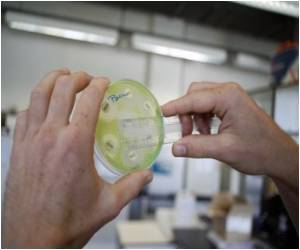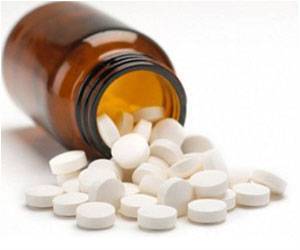By shredding and dissolving their double-layered membranes, an engineered peptide provides a new prototype for killing an entire category of resistant bacteria.

Arap, Renata Pasqualini, Ph.D., also a co-senior author, professor in genitourinary medical oncology and the Koch center, and colleagues have previously constructed peptide combinations that are in development against cancer and white fat cells.
"The prototype introduced here as an antibiotic candidate has a unique mechanism of action and translational applications readily identified," Pasqualini said.
Gram-negative bacteria that are highly resistant to existing treatments include E. coli, Acinetobacter baumanii, Pseudomonas aeruginosa, and kebsiella pneumonia. These infections are often present in health care settings and most threatening to people with weakened immune systems.
The spiral peptide called KLAKLAKKLAKLAK acts against bacteria by puncturing their lipid bilayer membranes and has only low toxicity toward mammalian cells. These antimicrobial peptides, however, are subject to routine destruction by host enzymes or those generated by the microbe. Combating that effect by increasing the dose heightens both toxicity to other cells and cost.
D- KLAKLAKKLAKLAK destroys microbes, biofilms
Advertisement
The peptide is made of L-amino acids, the building blocks of life, which makes them vulnerable to destruction. The researchers synthesized a peptidomimetic – a version of the peptide using D-amino acids with a reversed peptide sequence, making it more durable.
Advertisement
- Kills a variety of strains of E. coli, A. baumanii and P. aeruginosa, including multi-drug resistant strains.
- Works against Gram-negative bacteria at all phases of growth, including dormant cells that are prone to become resistant.
- Causes dose-dependent damage to the bacterial membrane resulting in its dissipation and cell death.
- Specifically disrupts lipids found in Gram-negative bacteria membranes while not affecting membranes in eukaryotic cells – cells with the nucleus and other structures enclosed in separate membranes found in mammals and other non-microbial life.
- Works in combination with the antibiotic piperacillin at lower doses to kill bacteria.
- Eliminates biofilms, layers of combinations of microbes that adhere to surfaces and provide an ideal setting for bacterial growth.
Next step: Animal model experiments
Arap and Pasqualini note that developing D- KLAKLAKKLAKLAK as a drug will next require experiments in animal models of sepsis and other infections to further gauge the peptide's effectiveness and side effects.
In their cancer and anti-obesity research, the D-peptide is used with targeting agents to hit specific cells. Large preclinical studies in mice, rats and monkeys showed low toxicity at treatment-level concentrations. Their cancer drug in a first-in-human phase I clinical trial revealed side effects that were predictable, dose-dependent and reversible. Even so, toxicity may differ when it's used against bacterial infections.
The peptide was not effective against Gram-positive bacteria, which have thicker cell walls but are generally more vulnerable to antibiotics and the immune system than are Gram-negative bacteria. Gram-positive bacteria include those that cause anthrax, tuberculosis, strep throat and such treatment-resistant infections as Staphylococcus aureus.
Gram-negative bacteria, which have thinner membranes but are generally more resistant to antibiotics or immune system attack, also include those that cause typhoid fever, cholera, gonorrhea, syphilis and lyme disease.
Source-Eurekalert











